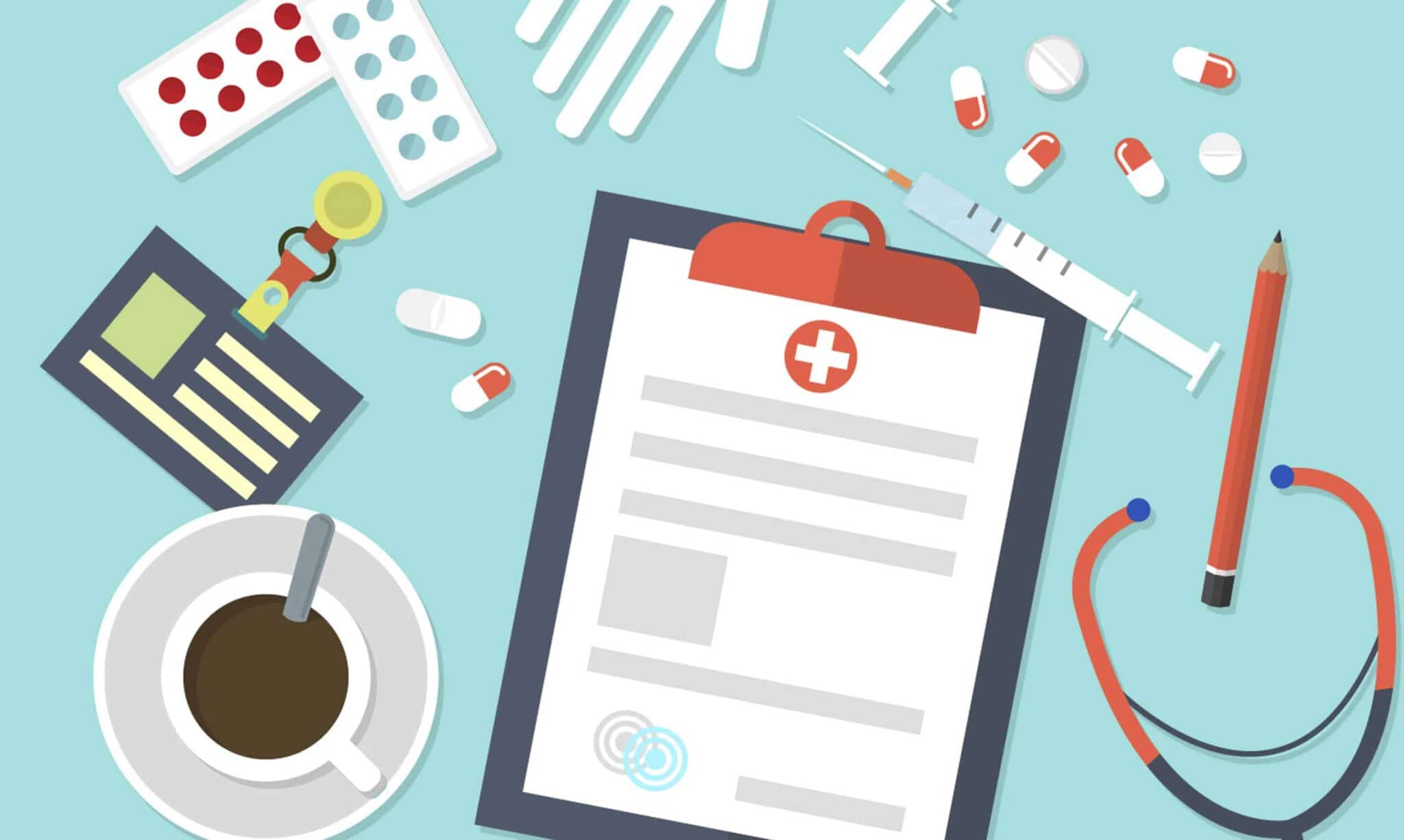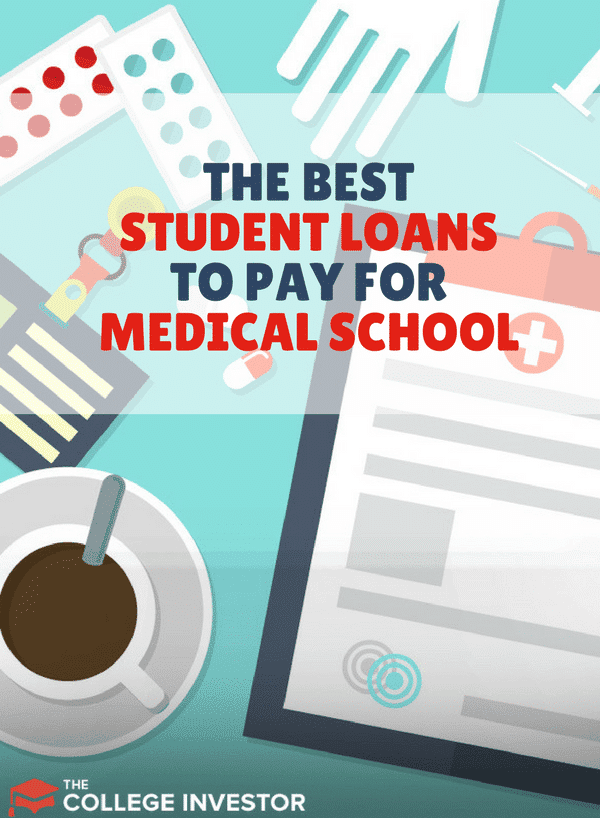
Medical school is expensive. There no way around that. However, doctors (in general) also earn significant salaries after graduation to potentially justify the high costs.
According to the Association of American Medical Colleges (AAMC), the average student loan debt of graduating doctors is $183,000. And then you still have years of residency (where you're only going to earn $55,000 per year) before you get to really earning significant income.
As such, you need to know the options for how to pay for medical school and your medical degree in the most effective way possible. It can sound daunting to take out $183,000 in student loans, have years before you can start repayment, only for the hope of earning more in the future.
But you're going to be a doctor! You're going to save lives! Let's talk about how to keep your money in order and how to find the best loans to pay for medical school!
If you already know most of your options and are simply looking to find the best private student loans, check out Credible and compare your options in 2 minutes. Try Credible here.
The Order Of Operations To Pay For Medical School
There is a smart order of operations to pay for medical school. We'll talk about each a little more in-depth below, but in general, you should follow this order if you can.
Honestly, this order of operations applies for paying for college in general as well.
Your Own Savings
Scholarships and Grants
Direct Subsidized or Unsubsidized Loans
Direct PLUS Graduate Loans
Private Student Loans
Of course, there are always variations on a theme, but in general, this is the order you should follow when paying for medical school and getting student loans for your medical degree.
Your Own Savings
The first place to start is your own savings. I know this won't get you far, but if you've worked in high school or during undergrad, you might have a nice bit of money saved up that can help offset the costs of medical school.
It's important to note that you shouldn't be depleting your savings to pay for school. It's important that you keep an emergency fund to cover your expenses should something happen. I've seen too many issues where a car accident or some other unexpected event puts you out of commission for months. That's why having an emergency fund is so important - even for students.
Scholarships And Grants
After your own savings, you should see if you can qualify for any scholarships and grants. There are a large number of scholarships that are directed towards medical students, but don't ignore other scholarship and grant opportunities as well.
Using grants to pay for college is a great (and underutilized) opportunity to save money on the cost of going to school.
And there are other scholarships that you might qualify for. We have our Side Hustlin' Student Scholarship that is geared towards entrepreneurial college students.
The bottom line is that you should look outside the box when applying for scholarships.
Direct Student Loans
After you've exhausted your own money (between savings, working, and scholarships), it's time to consider student loans.
When looking at student loans, you should always start with Federal loans. The best Federal student loans are Direct Subsidized Loans, followed by Direct Unsubsidized Loans.
Direct Subsidized Loans are available to students who show a financial need. Direct Unsubsidized Loans are available to graduate and professional students, and are distributed to individuals regardless of financial need.
You might qualify for a combination of subsidized and unsubsidized loans. You can find the interest rates of student loans here.
Note: Direct student loans are potentially eligible for student loan forgiveness for doctors.
Direct PLUS Graduate Student Loans
After you've taken advantage of the Direct Subsidized and Unsubsidized Loans up to their maximum, it's time to look at Direct PLUS Graduate Student Loans.
These loans can be take out to cover the maximum cost of attendance (according to your schools' financial aid office), minus any other financial aid received. For most medical students taking out student loans, Direct PLUS Loans can make up the difference of what's needed to pay for college.
A Direct PLUS Loan does require a credit check, so if you have a poor credit history, you may need a cosigner to help you with the student loan.
Direct PLUS Loans have some of the highest interest rates for Federal loans, so it's important to consider that when borrowing. If you have excellent credit, you might want to consider other options now or later.
HRSA Primary Care Loan
We didn't include this loan in our chart for how to pay for medical school, but it's important to note it's existence for the right borrowers. The Health Resources and Services Administration (HRSA) provides low cost loans to medical students who meet certain criteria.
This program provide long-term, low-interest rate loans to full-time, needy students to pursue a degree in allopathic or osteopathic medicine.
Students who receive loans must agree to enter and complete residency training in primary care within four years after graduation, and practice primary care for ten years or until the loan is paid in full, whichever occurs first.
As such, it might not be the right choice for everyone, but it's definitely an option for some. You can learn more about the HRSA Loan Program here.
Private Student Loans
Some medical students cannot solely rely on Federal loans to pay for medical school.
Either they exhaust Federal loan limits due to their school’s cost, they need more funds to cover living expenses while attending school, or they need more time to complete their education (which increases cost).
Others may find more value in taking on private loans given their excellent credit and ability to repay. In this case, private student loans may be a cheaper alternative due to low interest rates and excellent borrower programs.
We recommend borrowers shop and compare their private student loan options on Credible. We love Credible for a few reasons. They allow you to see your options in minutes. The compare most of the major lenders. And they make the process of getting a private loan super easy.
Credible also has some of our favorite medical school lenders on their platform, such as Splash Financial.
You might also check out Ascent, which is known for incredibly low rates for medical school loans.
Check out Credible here for your private student loan needs.
Medical Residency Loans
After you finish medical school, you must do your residency in order to become a doctor. However, traditional student loans don't cover residency, and your small salary may not be enough for you depending on what your needs are (and those of your family).
That's where medical residency and relocation loans come in. We have a full guide on this here: Where to Find Medical Residency and Relocation Loans >>
Refinancing Student Loans After Graduation
If you're finding this article after you've already taken out loans for medical school, you might consider student loan refinancing.
But first, you might want to speak with a financial planner that understands medicine.
If you have private loans or high-interest Federal Loans (like the Direct PLUS Loans mentioned above), refinancing might allow you to lower your payment or save on interest on your medical school loans. Through refinancing, you take out a new student loan from a private lender and use it pay off your other loans. With the new student loan, you may qualify for a lower interest rate, better repayment term, or lower monthly payment.
If you have Federal student loans, refinancing will cost you the ability to apply for an income-driven repayment plan or forbearance. That's why, for many borrowers, we don't think you should refinance your Federal student loan for a private student loan.
However, doctors are the exception to the rule. Doctors will make a significant amount of money once they start in practice. For many, this means they would benefit more from getting a student loan with a low interest rate, versus keeping a Federal student loan.
For example, Direct PLUS Graduate loans currently have an interest rate of 7.54%. But you can refinance with Credible and potentially get a lower interest rate!
See if Credible makes sense to refinance. You can shop loans in 2 minutes. As a bonus to College Investor readers, you'll get up to a $1,000 gift card bonus when you refinance with Credible. See terms. Check out Credible today.
Final Thoughts
While the thought of borrowing so much money to pay for school can be exhausting, remember the prize at the end of the tunnel. You'll be earning a significant amount of money after graduation, and you'll be able to afford your student loan payments.
The math on student loans for medical students is relative. While a teacher may borrow $40,000, they will only expect to earn $40,000 per year after graduation. A doctor, on the other hand, will earn anywhere from $138,000 to $200,000 in their first year after residency. That makes the student loan amount relative.
A good tip I always like to share with doctors as well - live like a resident for your first few years of practice. You've delayed gratification for years, just add a couple more. You can use those first few years of high income to eliminate your student loan debt, and you'll set yourself up for a bright financial future.

Robert Farrington is America’s Millennial Money Expert® and America’s Student Loan Debt Expert™, and the founder of The College Investor, a personal finance site dedicated to helping millennials escape student loan debt to start investing and building wealth for the future. You can learn more about him on the About Page or on his personal site RobertFarrington.com.
He regularly writes about investing, student loan debt, and general personal finance topics geared toward anyone wanting to earn more, get out of debt, and start building wealth for the future.
He has been quoted in major publications, including the New York Times, Wall Street Journal, Washington Post, ABC, NBC, Today, and more. He is also a regular contributor to Forbes.
Editor: Clint Proctor Reviewed by: Claire Tak
